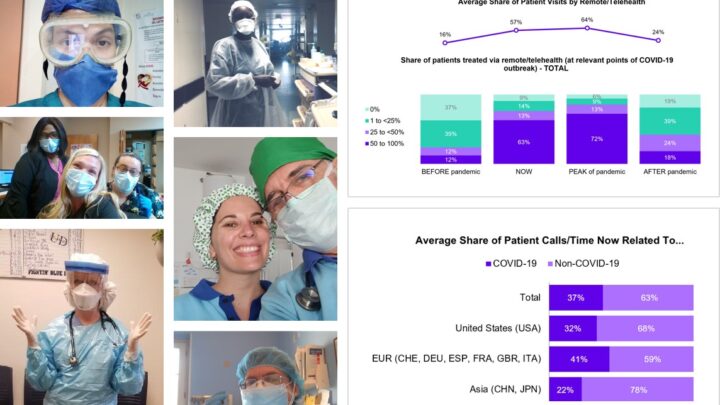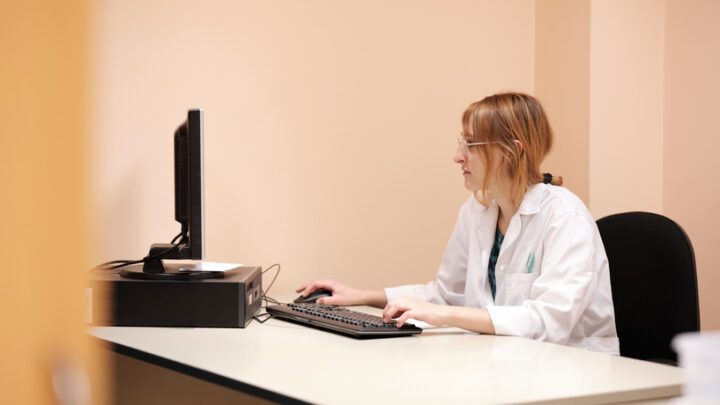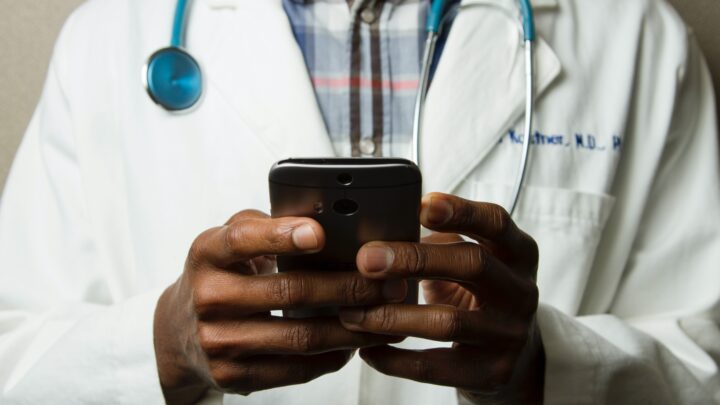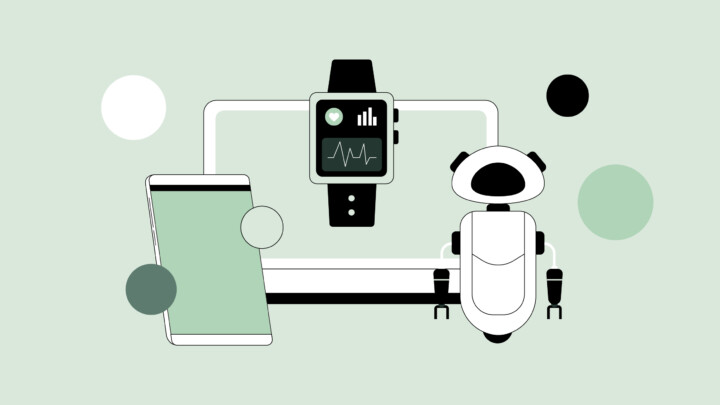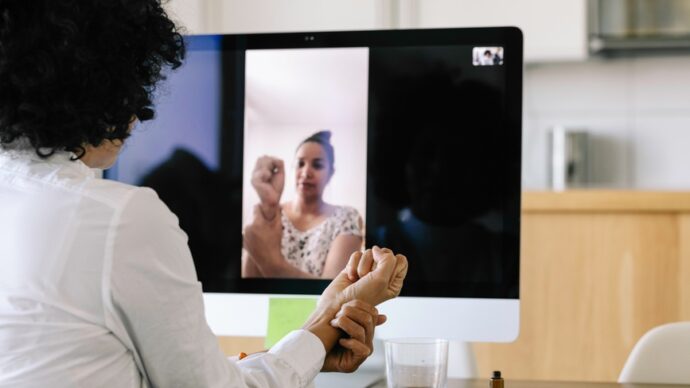
The pandemic—as unwanted and devastating as it was—revolutionized the delivery of health care. Out of necessity, it moved telemedicine off the sidelines and into a starring role—not just for COVID-19, but also for a wide range of health conditions. But what does the future of telemedicine look like?
According to a recent report conducted by the Kaiser Family Foundation, “of the roughly 24 million Medicare beneficiaries whose providers offer telehealth services, nearly half (45 percent) conducted a virtual visit between the summer and fall of 2020. It also found that another 23 percent of Medicare beneficiaries weren’t aware telehealth sessions were even possible…
Before the public health emergency, telehealth services were generally available only to beneficiaries in rural areas originating from a health care setting, such as a clinic or doctor’s office. Beneficiaries in urban areas were ineligible for telehealth services, and beneficiaries could not receive telehealth services in their own homes. During the public health emergency, beneficiaries in any geographic area can receive telehealth services, and can receive these services in their own home, rather than needing to travel to a “distant site” (i.e., a health care setting)…”
As The Hill reports, “With COVID-19 now waning in the United States, telemedicine advocates want to see these changes made permanent. Bipartisan efforts in Congress are attempting to modernize telemedicine and continue access to these life-saving services. The Protecting Access to Post-COVID-19 Telehealth Act of 2021, or HR 366, led by the Congressional Telehealth Caucus, specifically calls out the need to expand telemedicine to underserved and at-risk populations and seniors.
Despite this push from both advocates and Congress, the U.S. Government Accountability Office (GAO) advised Congress just weeks ago that it should wait and further study whether the quality of telehealth care during the pandemic was high enough to warrant a permanent expansion of Medicare and Medicaid programs.”
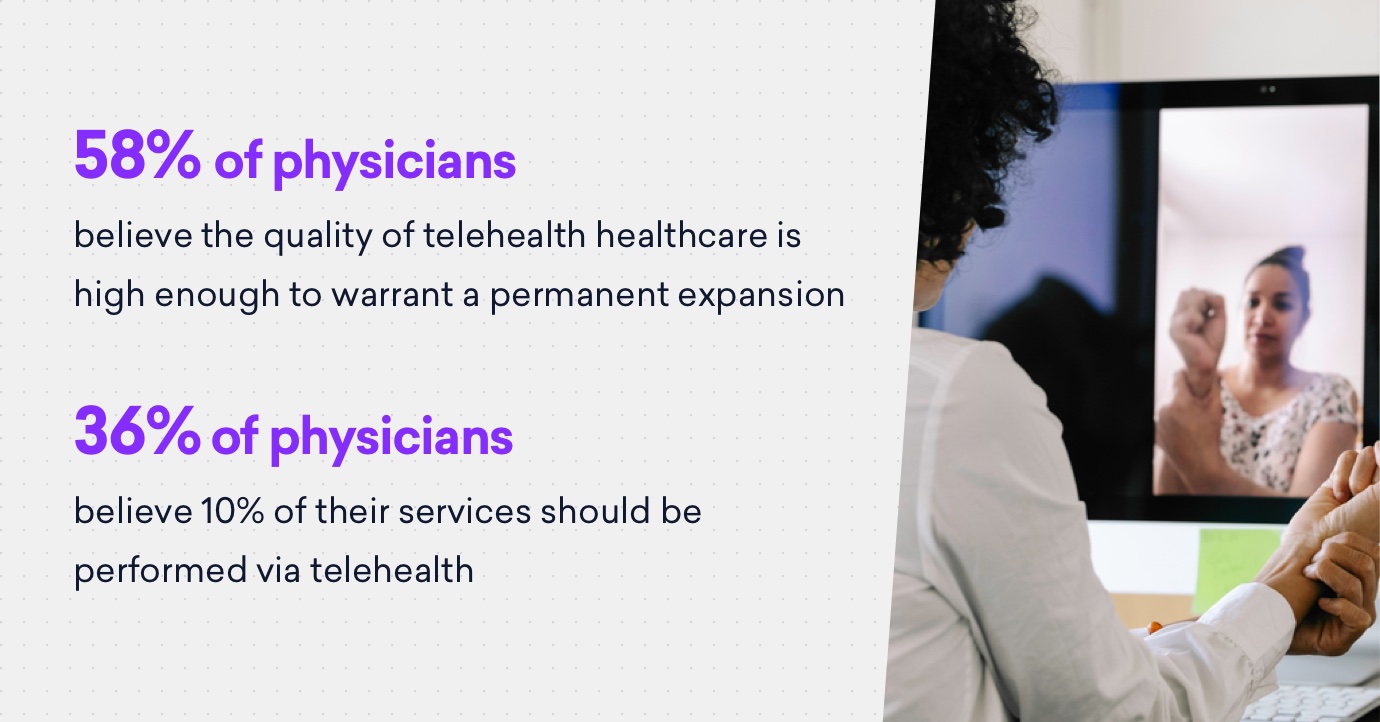
According to a recent poll of about 200 global Sermo physicians, 58% believe the quality of telehealth healthcare is high enough to warrant a permanent expansion; while 21% do not; and 20% remain uncertain.
Eighty-one percent of physicians report a significant increase in the number of telehealth patient visits they’ve received in the past year. When asked whether using telehealth can increase access to healthcare for disadvantaged populations, or if it decreases access due to poor broadband or video connection—62% said it increases access; 12% said it decreases access; and 26% say it’s too soon to tell.
When asked what percentage of services should be performed via telehealth visits, here is how physicians responded:
- 36% said 10%
- 21% said 20%
- 19% said 50%
- 17% said 30%
- 7% said 40%
When asked how telehealth should be billed, 59% said that telehealth should be billed at the same rates as in-person visits, because it requires the same medical knowledge; and 34% said it shouldn’t be considered the same as an in-person visit, and therefore it should be billed differently.
Here is more of what Sermo physicians have to say on telehealth:
Telehealth is beneficial for patients with chr/severe medical problems, transportation problems, childcare/caregiver issues & the disabled & elderly with reduced mobility
Pediatrics, U.S.
Mental Health needs telehealth to stay
Psychiatry, U.S.
I recently took care of a premature infant. Her Mom didn’t know she was pregnant, drank a gallon of booze a day and took various illicit drugs. During the pregnancy the Mom had abdominal pain, had a number of telemedicine visits for it, was told to cut down on her alcohol consumption. Maybe, maybe, if this Mom was seen in person her pregnancy would have been discovered earlier.
Pediatrics, U.S.
I can do accurate exams by a video otoscope
Otolaryngology (ORL / ENT), U.S.
V useful in follow up visits and getting prescription refills
Neurology, India
I have been doing telehealth since 2004 but of course more in the last 1.5 years. I am in endocrinology and my diabetic patients are doing better with telehealth. they show me what is in their cupboards, refig etc. I get to understand family dynamics. Easy also for thyroid. they come close to the camera and swallow and as long as ultrasounds and other testing/labs available in our associated hospital, patients doing great. We do insulin pump management etc with patients and they love telehealth. I think once a year they should be seen in person if they want.
Diabetology, U.S.
These options enable folks with transportation or other life issues that prevent a face to face visit to continue to get good continuity of care. They should not substitute completely for in person visits. Medicine is becoming depersonalized enough!
Psychiatry, U.S.
Telehealth needs to be thrown away. I cannot believe how many misdiagnoses I have seen when not done in-person. I only use it when the patient is not even in the same state, or defer to an urgent care visit.
Family Medicine, U.S.
I had proposed on Sermo before that the physical exam be billed separately, much like a procedure is billed separately. I should be paid MORE than those who simply talk if my fact gathering includes a properly performed exam pertinent to a concern – regardless of in-person or virtual.
Family Medicine, U.S.
